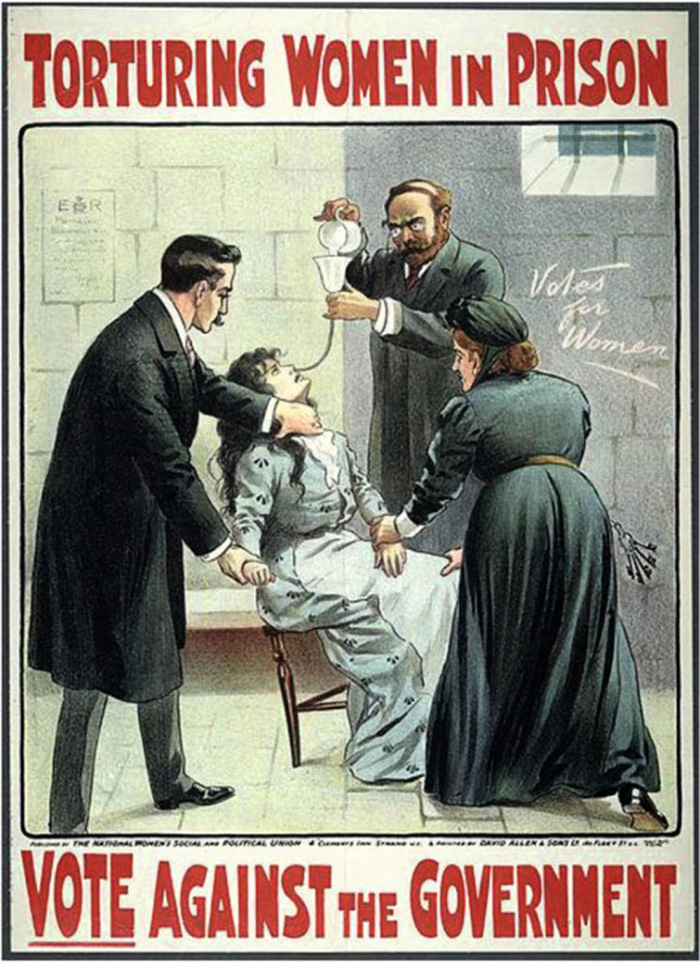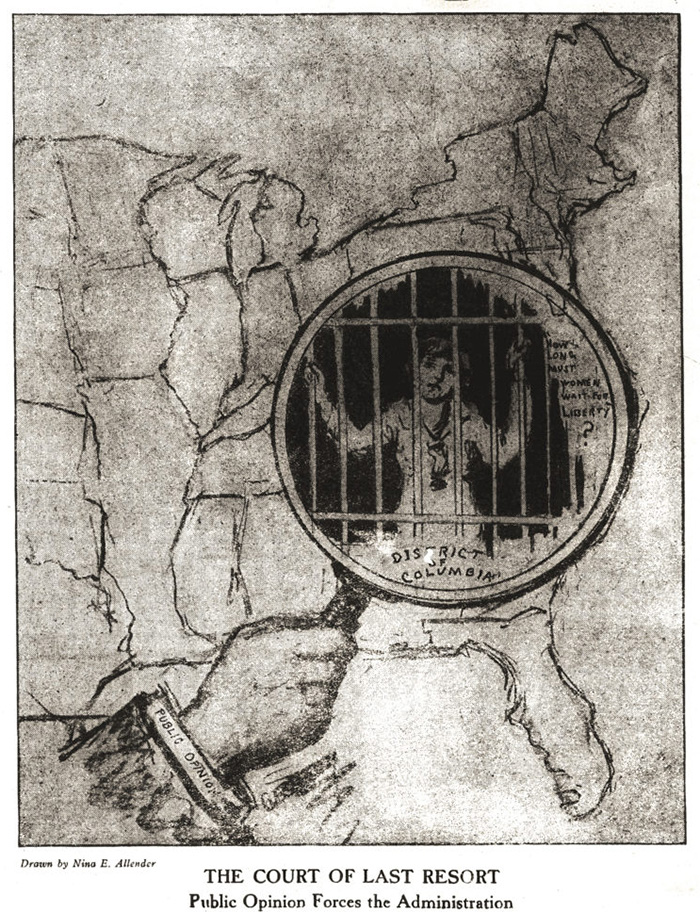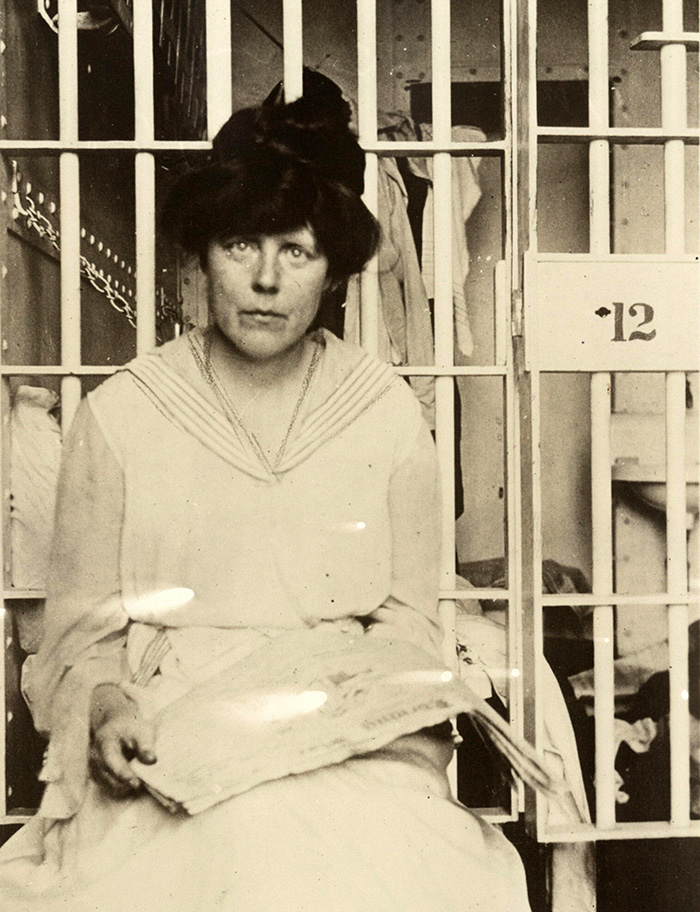Silent Sentinels Picket the White House
Page Content

This ca. 1910 poster by the National Women's Social and Political Union dramatically illustrates prison torture allegations. (Courtesy of Library of Congress)
Enlarge Image
This ca. 1910 poster by the National Women's Social and Political Union dramatically illustrates prison torture allegations. (Courtesy of Library of Congress)
Enlarge Image The sentinels were a faction within the National Woman’s Party who picketed the White House for two and a half years from January 1917 to June 1919 to visibly advocate for woman suffrage. Led by Alice Paul and Lucy Burns, some 2,000 women employed silence as a protest tactic, and bore signs calling on President Wilson to support suffrage and shaming him for hypocrisy. Their tactics were disliked by many, including more conservative suffrage organizations who feared they would turn public opinion against the cause.
The protesters were tolerated at first but grew increasingly harassed and assaulted as their vigil continued through the American entry into World War I. Beginning in the summer of 1917, Paul, Burns, and others were arrested for obstructing traffic in front of the White House. Detained in the District of Columbia Jail and Virginia’s Occoquan Workhouse, the women began a hunger strike to protest their state as political prisoners. Striking suffragists were force-fed through tubes, and on November 14, 1917, known as the "Night of Terror," the superintendent of the Occoquan Workhouse ordered his guards to batter the sentinels into submission.
News media brought these stories of state brutality against women to the public and helped turn the tide towards suffrage. The electorate began sympathizing with the sentinels after the Night of Terror, and they were all released by November 28. The following January, President Wilson announced his support of woman suffrage. The sentinels continued to protest, even burning an effigy of the president in front of the White House in February of 1919. They continued to picket until congress passed the 19th Amendment, and then dispersed to the states where they began agitating for ratification.

This illustration by Nina E. Allender, entitled “The Court of Last Resort,” draws attention to the treatment of protesters. (The Suffragist, December 1, 1917)

Lucy Burns sits in the Occoquan Workhouse in Washington D.C. in November 1917. During a hunger strike, she was force-fed food through a tube. (Courtesy of Library of Congress)